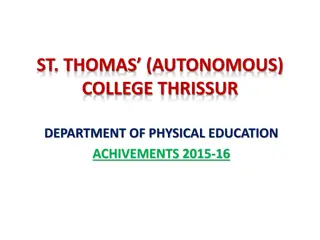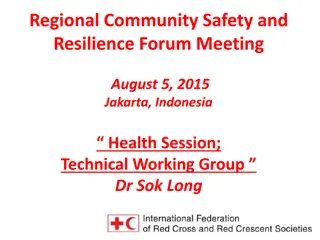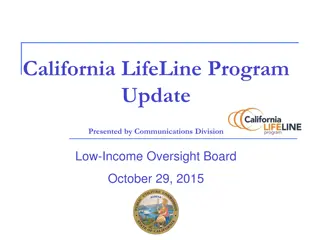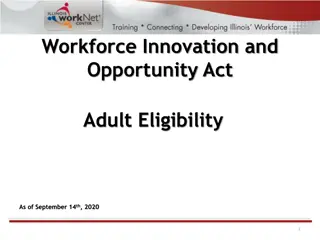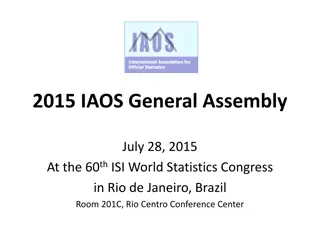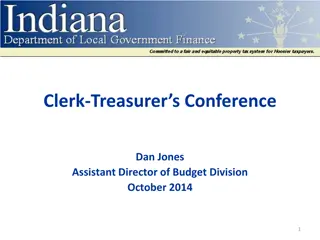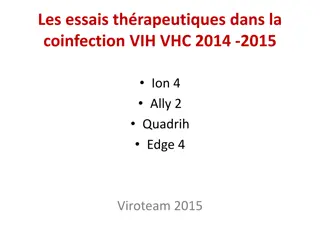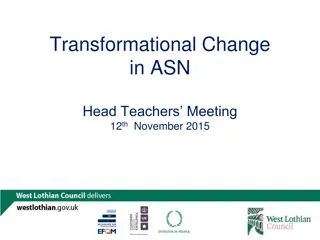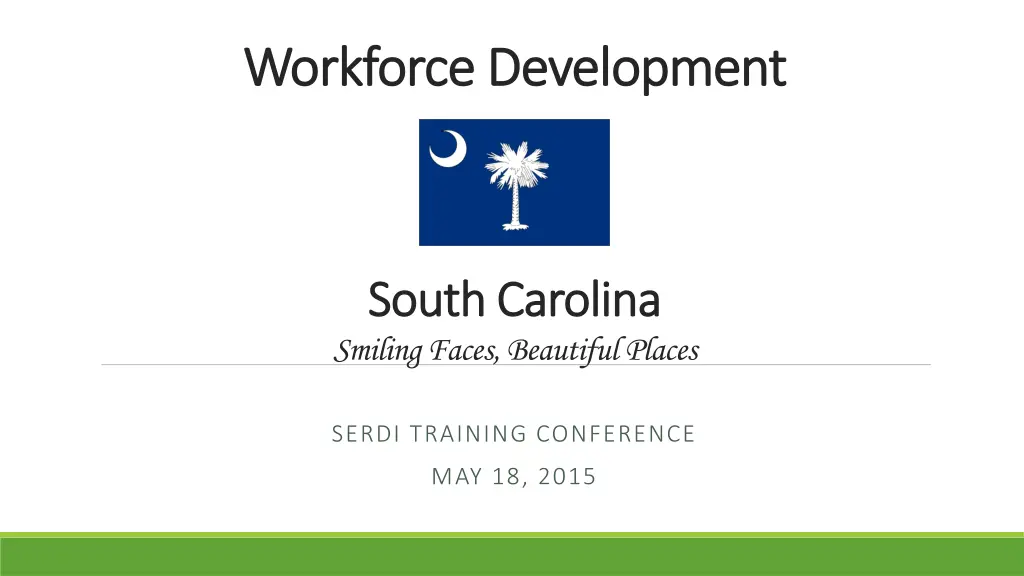
South Carolina Workforce Development Overview
Explore the comprehensive workforce development initiatives in South Carolina, managed by the SC Department of Employment and Workforce (SC DEW), including WIA/WIOA funding administration, partnership collaborations, regional workforce centers, and performance comparisons. Learn about the workforce regions, COGs, and specific details of the Catawba Regional Workforce Area. Discover the focus on new job announcements, industrial clusters, and key performance indicators in the Catawba Region.
Download Presentation

Please find below an Image/Link to download the presentation.
The content on the website is provided AS IS for your information and personal use only. It may not be sold, licensed, or shared on other websites without obtaining consent from the author. If you encounter any issues during the download, it is possible that the publisher has removed the file from their server.
You are allowed to download the files provided on this website for personal or commercial use, subject to the condition that they are used lawfully. All files are the property of their respective owners.
The content on the website is provided AS IS for your information and personal use only. It may not be sold, licensed, or shared on other websites without obtaining consent from the author.
E N D
Presentation Transcript
Workforce Development Workforce Development South Carolina South Carolina Smiling Faces, Beautiful Places SERDI TRAINING CONFERENCE MAY 18, 2015
Background State Administrator: SC Department of Employment and Workforce (SC DEW) Administers WIA/WIOA funding from the US Department of Labor Provides Wagner-Peyser services Negotiates and measures statewide and local area goals Each WIOA area/region has at least one comprehensive workforce center Multiple partners: Wagner-Peyser (state) staff, Vocational Rehabilitation, Department of Social Services, Adult Education, AARP, WIA/WIOA, etc. Each WIOA region has access points Provide WIOA services to eligible individual and referrals to other partner agencies. May have intermittent Wagner-Peyser staffing (i.e. 1-2 days/week) Usually located in rural areas or small towns.
SC Workforce Regions Twelve WIOA regions across the state Ten regions area administered by COGS Two regions are administered by county governments
Catawba Regional COG Four Counties ~ 374,649 Population Charlotte-Concord-Gastonia MSA Largest County (York) ~ 234,608; Smallest County (Union) ~ 28,273 Largest City Rock Hill ~ 70,000 Environment: Urbanizing to rural The Catawba Region represents approximately 16% of the Greater Charlotte MSA s total population, and is positioned geographically at southern end of the MSA. COG Board = 36 members COG Staff = 22
Catawba Regional Workforce Area Three Counties Chester, Lancaster, York Over 5,000 new jobs (manufacturing and professional services) announced in the Catawba Region this year. Manufacturing is making a large comeback after the demise of textile industry in the last decade. Other large industrial clusters include distribution and professional services (financial). WIOA Board = 28 members. Catawba Regional COG serves as the Administrative Entity PY14 WIA Funding was ~ $2.9 million COG WIOA staff of 4; Adult/Dislocated Worker/Youth and Operator Functions are contracted out.
Catawba Regions WIA 6 Year Performance Comparison Performance Standard PY08 PY09 PY10 PY11 PY12 PY13 Final Final Final Final Final Final Youth Placement in Employment/Education 54.1% 35.8% 52.0% 52.5% 64.3% 57.5% Attainment of Degree or Certificate 47.9% 40.3% 50.4% 57.4% 70.5% 72.6% Literacy or Numeracy Gains-(OS-Only) 35.3% 36.1% 45.1% 55.5% 64.2% 61.7% Adult Entered Employment Rate-Adults 65.5% 44.9% 54.0% 57.5% 71.2% 73.5% Employment Retention Rate- Adults 82.3% 77.2% 82.0% 81.9% 85.4% 89.5% Average Earnings-Adults $10,185 $9,280 $10,454 $10,838 $11,518 $11,254 Dislocated Workers Entered Employments-Dislocated Workers 59.3% 46.4% 58.6% 69.5% 78.3% 81.1% Empl. Retention Rate-Dislocated Workers 86.1% 82.4% 84.5% 88.7% 95.4% 94.4% Average Earnings-Dislocated Workers $12,239 $11,579 $13,393 $16,107 $14,528 $15,133 Exceeds Meets Failed *performance goals varied over the 6 years
Challenges in SC Consistent and timely metrics: Increasing state goals/performance will likely determine regions in SC after 2016. Performance is difficult to assess due to lag time in performance results. Consistent program direction: SC DEW has some challenging personalities and has experienced repeated turnover of State Directors. Potential conflicts of interest: Many COGs function as the operator of SC Works Offices difficult to determine how RFPs can be completed at arms length when the COG is also the Fiscal Agent/Administrator for area Federal funding: Decreasing funds make balancing administrative costs difficult Local Staffing: Workforce staff tend to focus on operational issues, and can miss bigger (i.e. political) issues. Each region seems to operate a little differently, making consistency difficult particularly in responding as a group to SC DEW. Many Disparate Parts - Local Understanding/Education: Workforce Development includes many partners (not all working together) Elected officials and the private sector
Opportunities/Solutions in SC Active Communication: Workforce administrators meet monthly with SC DEW program staff, and COG Directors meet monthly with SC DEW Director during transition to WIOA. Active Education: Developing clear and concise materials/PR to identify the benefits of workforce development (and WIOA s specific role) in the local/regional economy Local Staffing: COG Directors should participate in WIOA Board Meetings and effectively communicate/reiterate the roles of COG vs. Workforce Board Creatively find ways to consistently and adequately serve rural/remote areas (i.e. remote access) Local Understanding: Continue to educate local officials and private sector via consistent messaging in parternship with continuum of partners (Technical Education, ReadySC, Business Services staff, SC DEW staff, etc.) Demonstrate increased value through Business Testimonials, Partner Testimonials, Participant Testimonials/Success Stories







